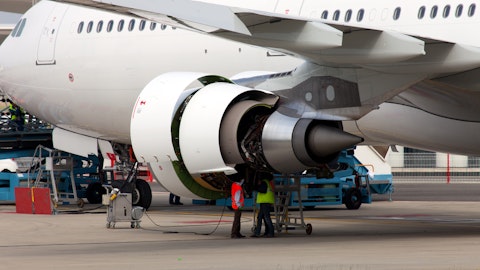Stephen Trent: Perfect page. I appreciate that. And as my follow-up, looking at this, a very good ex-fuel, CASM color for 2024 to what degree do you think some of that might be coming from tilt towards more direct channel sales, for example?
Jose Montero: Sure. No, absolutely. That’s a big portion of our strategy for having a multiyear CASM target, clearly sub-6; it’s been driven in large part through our Copa Connect strategy. It’s been working on great over the last several months. So that’s certainly a big portion of our continued track towards 5.9% in 2024 and 5.8% 2025.
Pedro Heilbron: And also, Stephen, it’s holding overhead, holding fixed costs tight, so we benefit from the growth in ASMs. That’s another way we’re achieving our numbers.
Jose Montero: Yes. And look, I mean we’re talking about CASM, there’s always headwinds of items that we might not control. There might be whatever, aerospace, charge increases in different countries, et cetera and that’s the sort of thing or inflationary pressures because of ARB. As partners we try to counter those with our own internal efficiencies and with projects such as Copa Connect or diversification, et cetera. So we always have our guard up in terms of keeping our costs as low as they can be.
Stephen Trent: Okay. That’s very, very helpful. And see you in a few weeks.
Operator: One moment for our next question. Our next question comes from Daniel McKenzie with Seaport Global.
Daniel McKenzie: I guess following up on that last question, going back to Copa Connect and to lower distribution costs. I’m wondering if you can just help us put some numbers around what that means exactly. So what you’re seeing on cost savings and specifically from this initiative? And how the change in the distribution strategy is helping you to drive more revenue. So maybe just related to that, what percent of the passengers coming to copa.com are actually purchasing a ticket with an upsell feature, for example?
Pedro Heilbron: Okay. So let me start with a few general comments, then I’ll give Jose some time too. To see how much of the info you’re asking. We can gather quickly. But first thing I would say is that, as Jose mentioned, our direct distribution strategy which we call Copa Connect has been very successful. And to date, we are already over 70% direct sales, including the NDC channel for the agencies. So when we add our website, our other direct channels and the agencies that connect through our NDC channel, we’re over 70%. It used to be the other way around, a year over a year ago when we first started. So that in itself it’s a significant change and it surpassed our projections for this year. Then by going direct, via — be it through the NDC channel or our website, we’re able to offer more options for passengers.
We’re able to work on the upsell and a significant percent of the passengers that buy in the website and NDC for sure, are upselling. And only we have with us right now the exact percentage but it’s important. And it’s a valid question because, of course, our lowest fares come with additional ancillaries like seats and bags. But then upselling, it’s also a very important revenue stream for us.
Jose Montero: Yes, Dan, I would say that in terms of cost, the channel shifting and Copa Connect strategy, good argue call it, $0.001 of cash on this, provided for us — for this year. And in terms of the value of ancillaries, within — I don’t know, we’ve probably quadrupled. The value of ancillaries is back in 2018. So in terms of revenue. So there is, of course, within that upsell of product — of folks that are buying tickets through our channel. So yes, it’s actually grown quite a bit over the last — so it’s back in 2019, call it, 4x the level of where we were. And that’s information that we shared back in our Investor Day a couple of months ago.
Daniel McKenzie: Yes, very good. And then second question here. Historically, Copa has targeted 18% to 20% operating margins. And in light of this year’s results, I guess my next question is how investors should really think about steady-state margins? Are the initiatives in place today enough to help you punch above what you’ve done historically?
Pedro Heilbron: Well, now you’re asking for 2024 guidance in a direct way. So we have to wait until February for that. But we have the wind in our back right now. And what that means for steady state in the future. It’s going to depend on how external factors change, fuel capacity from competitors et cetera, et cetera.
Jose Montero: But we are really pleased with our operating margin guidance of 23% for the year ’24 — full year 2023. It’s a pretty good result. I think it’s certainly — it’s been a very, very good year so far.
Operator: Our next question comes from Bruno Amorim with Goldman Sachs.
Bruno Amorim: I have a follow-up on this question on margins. I’m not asking for ’24 guidance but just wanted to hear from you what were in your view, the big changes that could eventually have led to those higher margins? We can understand to what extent they are sustainable. I understand there are some cost efficiencies, ex-fuel CASM is performing [indiscernible]. But if you look on a total CASM perspective, it is still higher versus 2019, right? Because that ex-fuel is much higher. So maybe the answer comes from the revenue side. And then on the revenue side, maybe one could argue there is less competition now post-pandemic? Is that the main change? Or is there anything else that you believe could justify much higher unit revenues on a sustainable basis?





